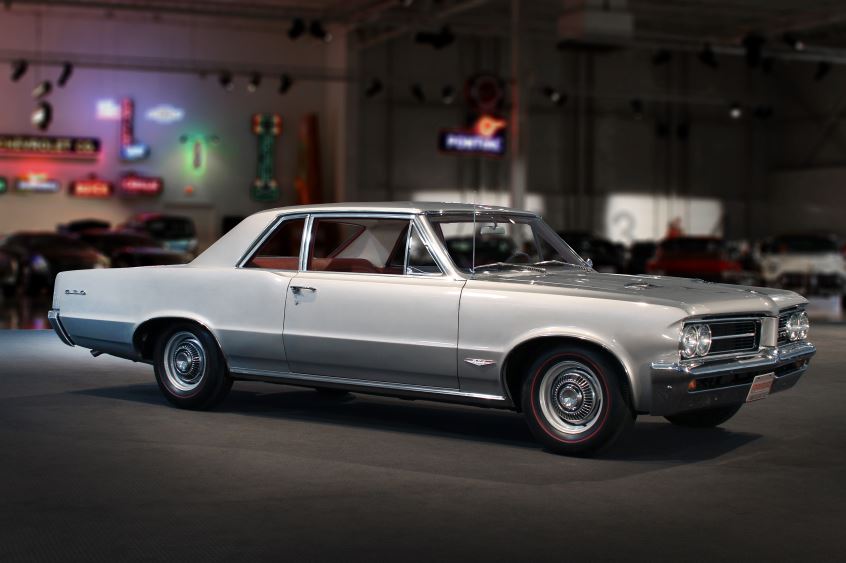
Photo courtesy of General Motors
The early 1960s were shaping up to be pretty dull for gearheads, as carmakers pulled their hot-rod punches just as they were learning to make real power with a new generation of muscular V8 engines. It came to an abrupt end in 1964 when car companies decided it was time to put that newfound muscle to work.
The problem was that the Automobile Manufacturers Association’s member car companies agreed to prohibit official corporate support of racing after 1956.
The engineers developing new go-fast parts, however, were undeterred, providing secret assistance to racers and concocting factory-developed race cars as low-volume “production” models meant only for sale to stock car and drag racing teams.
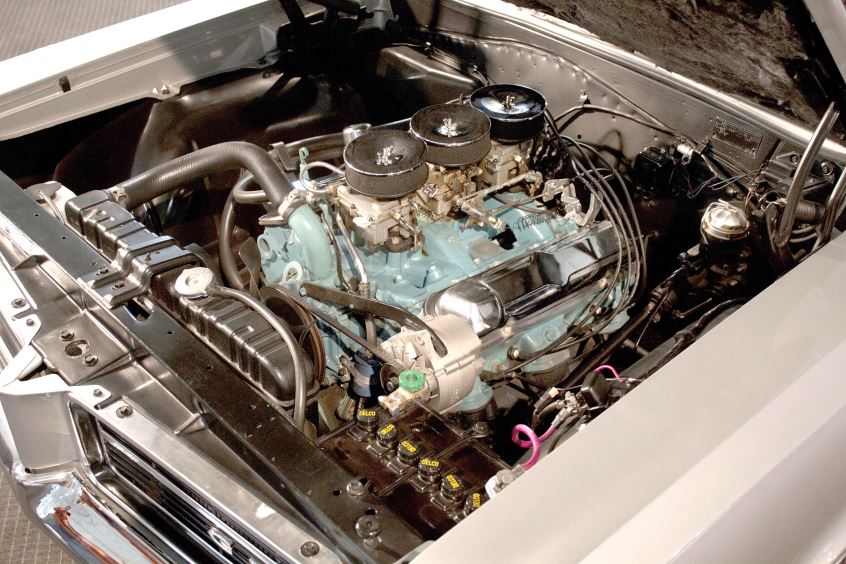
Photo courtesy of General Motors
By the 1964 model year, Ford Motor Company had denounced the agreement, launching its Total Performance ad campaign. Pontiac chief engineer John Z. DeLorean (yes, the guy behind the stainless steel-bodied, gull-winged, “Back To The Future” car) resolved to pursue sales to wannabe racers by squeezing the brand’s 389 cubic inch big block V8 engine into its mid-size Tempest model and labeling the optional package “GTO.”
GTO is an abbreviation for the Italian phrase “Grand Turismo Omologato,” or a grand touring car that has been certified, or homologated, for racing purposes. This was Ferrari’s term for the incredible 250 GTO, and Pontiac liked the term so well that they borrowed it. Hey, imitation is the sincerest form of flattery.
The GTO label enjoys such reverence at Ferrari that the company named its latest track-centric model the “488 Pista” (Pista means “track” in Italian) rather than GTO, for fear of inappropriate use of the revered badge.
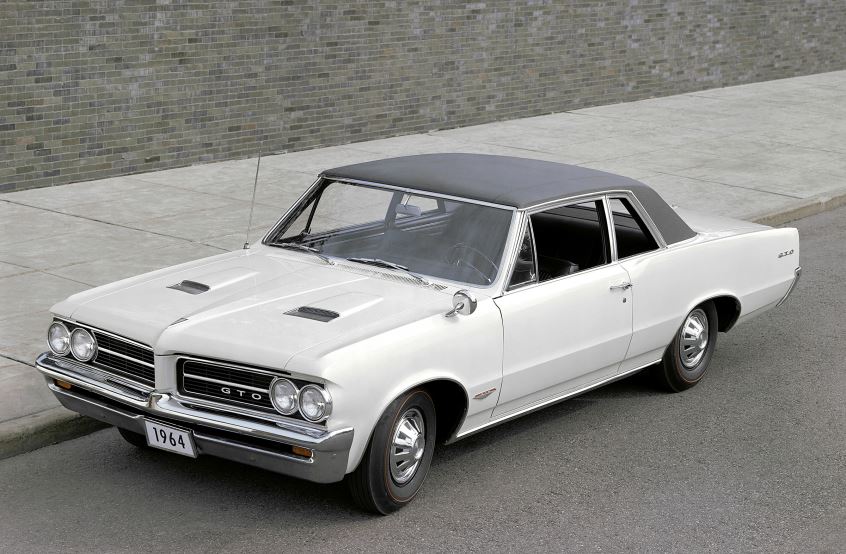
Photo courtesy of General Motors
Pontiac’s 1964 introduction of the GTO sparked the muscle car horsepower war of the 1960s, which lasted until a combination of primitive pollution control systems, demands for fuel efficiency and insurance company displeasure with the high-powered machines squeezed factory muscle cars out of existence within a decade. Other street-fighting rivals might have caught up to the GTO’s speed, but none of them could claim to have been the first muscle car.
In 1964, the Tempest’s GTO option added a 325-horsepower 389 V8, with 10.75:1 compression ratio and a four-barrel carburetor. There was even more power available when that single four-barrel carburetor was replaced by a trio of two-barrels. The “Tri-Power” arrangement boosted peak power to 348 horsepower.
It also featured a sporty floor-mounted manual shifter for the standard three-speed transmission at a time when column-mounted “three-on-the-tree” shifters were the norm.
A racy four-speed manual transmission was optional, or buyers could specify an automatic. That automatic did use a column-mounted shifter, unless the car was equipped with the optional center console between the front seats, in which case the shifter was on the floor.
The GTO’s suspension was stiffer than that of regular Tempests, and it also got a quicker 20:1 steering ratio, for sharper reflexes in turns.
“GTO. No other name in automotive history says ‘muscle car’ like those three letters,” boasted a 2004 Pontiac press release when the brand briefly revived the GTO nameplate. “When the GTO was introduced in 1964, its performance list included words like tri-power, ‘four on the floor’ and a 389 cubic-inch V-8, and the car virtually defined true street performance,” it concluded.
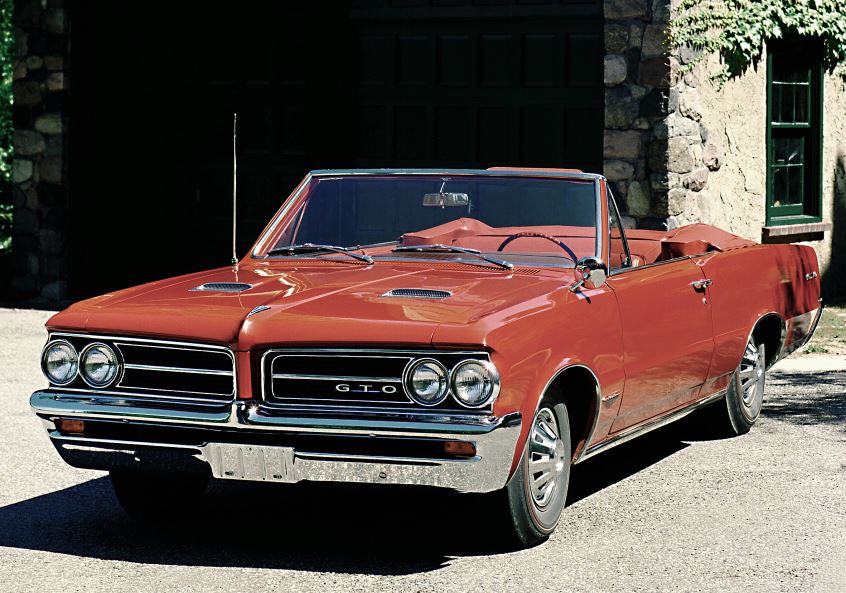
Photo courtesy of General Motors
The GTO option package was available for both two-door hardtop Tempests and for convertibles, so you could enjoy your fun with or without a sunburn.
Performance testing when the car was new revealed that the very first muscle car was no match for its successors. According to Motor Trend’s 1964 test, the GTO needed 5.7 seconds to reach 60 mph and took 13.29 to complete the quarter-mile. The car seems to have been severely handicapped by the rubber technology of the time, hinting at why the sage advice offered in the 1967 film The Graduate was to work in “plastics.”
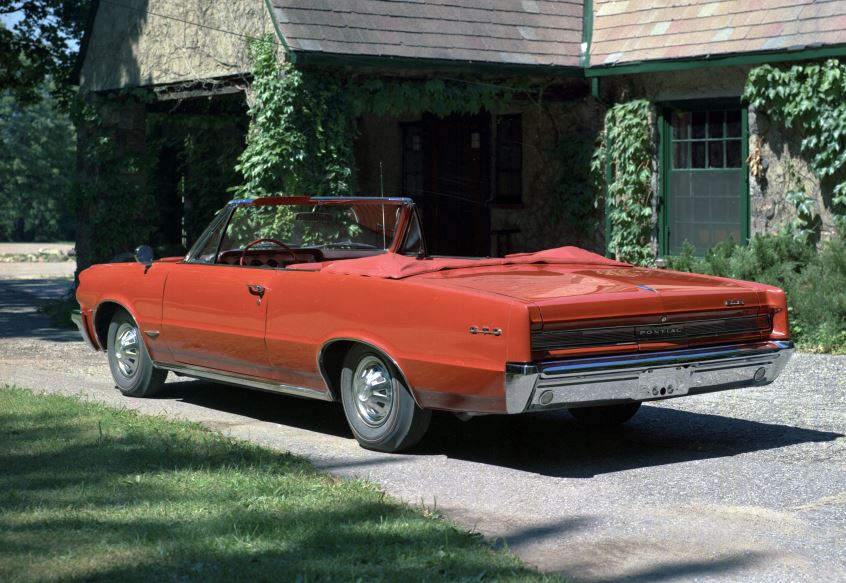
Photo courtesy of General Motors
Fuel efficiency standards were different then too. Motor Trend pronounced the GTO’s fuel economy “reasonable,” when it scored “10 mpg around town in heavy traffic and a high of 16.6 on a short trip, giving us an overall average of 12.9 mpg for 600 miles of driving.” For some perspective, a 2018 Mustang gets up to 21 mpg in the city and 32 on the highway.
Nostalgic enthusiasts love the original GTO and will pay dearly for the chance to recapture the dawn of the muscle car era. Twenty-five 1964 Tempest GTOs listed on Autotrader Classics ranged in price from $28,995 to $85,900.
“In 1964, it didn’t get much cooler than this,” observed Jay Leno from behind the wheel of a ’64 GTO on his show, Jay Leno’s Garage. It doesn’t get much cooler now, either.

 Dan Carney
Dan Carney